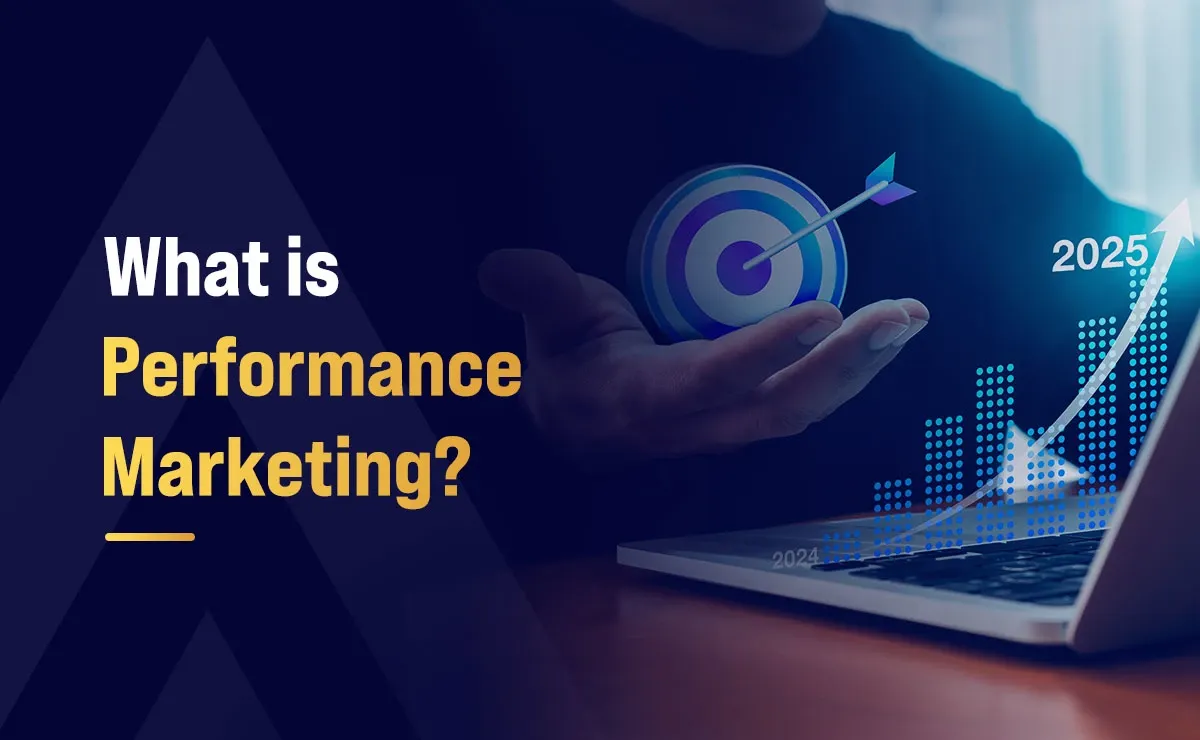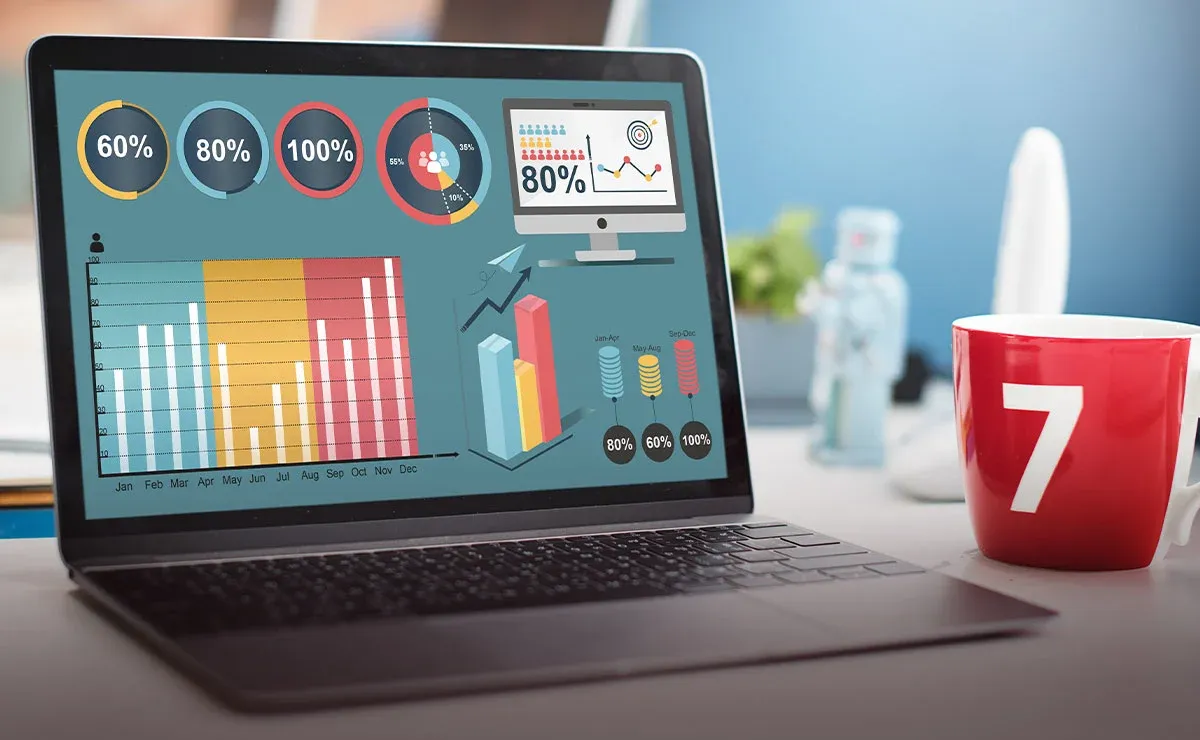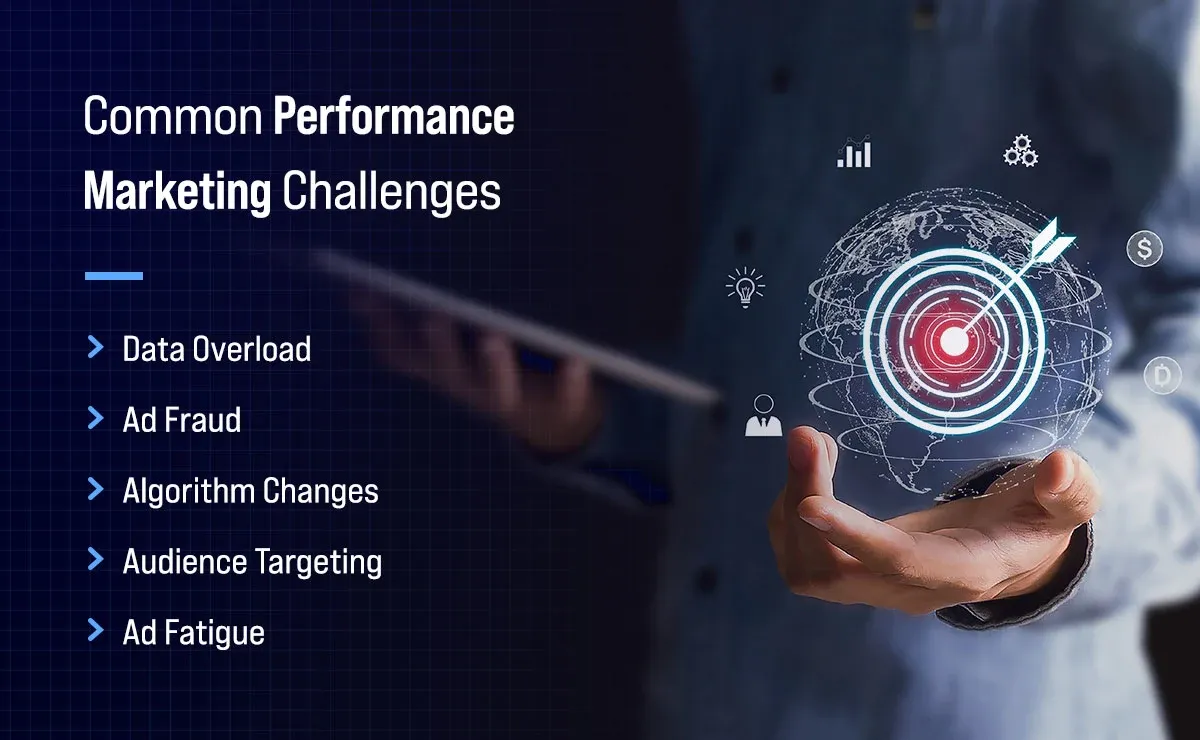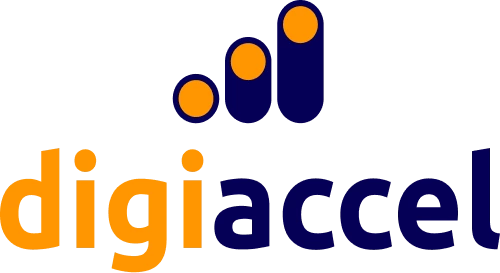What is Performance Marketing?

We are in an age of hyper-competitive digital economy, where brands no longer have the luxury of spending blindly on advertising without knowing if their money is generating real results. Marketing budgets face unprecedented scrutiny, with companies insisting on tangible returns for every rupee invested.
This is precisely where performance marketing steps in as a data-powered marketing strategy that shifts focus from impressions and awareness to real, trackable insights. It is outcome-oriented, and every campaign is designed to drive a specific user's actions. This makes it especially appealing to modern businesses aiming for efficiency, accountability, and scalability in their marketing efforts.
This article explores the intricacies of performance marketing in detail.
What is Performance Marketing?

Performance marketing stands out as a highly effective, data-centric strategy in modern digital marketing, which allows brands to pay solely for verified outcomes like clicks, conversions, or sales. Traditional advertising requires upfront payments regardless of results, whereas performance marketing ties expenditure directly to achieved objectives. This approach ensures that every rupee spent is tied directly to performance, which is why it has rapidly gained traction across industries.
How Does Performance Marketing Works?
Performance marketing revolves around accountability and results. Unlike brand marketing, where the goal is to raise awareness and build emotional connections, performance marketing is laser-focused on generating conversions, whether that’s a sale, a sign-up, a download, or a lead.
The foundation of performance marketing lies in its pay-for-results structure, where businesses launch campaigns with defined targets and incur costs only upon success. These goals are tracked in real-time through sophisticated analytics platforms, making the entire process transparent and ROI-focused.
Most performance marketing campaigns are executed through platforms like Google Ads, Facebook Ads, affiliate networks, and programmatic ad platforms. Brands establish key metrics like cost per click (CPC), cost per acquisition (CPA), or cost per lead (CPL) and continuously refine campaigns using real-time analytics to boost performance.
Top Performance Marketing Channels
Performance marketing thrives on the strategic use of digital channels where performance and ROI can be measured in real time. While there are many avenues to explore, let’s take a closer look at the top five performance marketing channels that modern businesses are using to fuel growth.
- Banner (Display) Ads: Display advertising involves placing banner ads on websites, apps, or platforms where your target audience spends time. These image-based ads appear on networks like Google Display, with costs tied to impressions (CPM) or clicks (CPC), perfect for boosting visibility or traffic.
- Native Advertising: Native ads blend seamlessly into platform layouts, resembling organic content for higher engagement and click-through rates. They typically appear as in-feed articles or recommendations and receive 53% more views than banner ads. Native advertising is less intrusive, improves engagement, and drives higher CTR. It is ideal for brands aiming to educate or subtly promote products.
- Partner and Affiliate Marketing: This model leverages external promoters who receive commissions for generating conversions, such as sales or registrations. It is outcome-driven and ideal for cost-efficient customer acquisition. Common in sectors like eCommerce and gaming, it uses platforms and affiliate networks for tracking, attribution, and campaign management.
- Social Media Marketing: Networks like Facebook, Instagram, and TikTok offer advanced targeting capabilities and diverse ad formats. Marketing professionals utilize these platforms to enhance brand visibility, generate website traffic, and maximize conversion rates. Campaigns are tailored to user demographics and behavior, delivering scalable, real-time results across user acquisition and engagement goals.
- Search Engine Marketing (SEM): SEM places sponsored ads on Google, Bing, and other search engines in response to user queries. It captures high-intent traffic and is highly effective for bottom-funnel conversions. SEM is measurable, ROI-driven, and ideal for businesses looking to reach consumers actively searching for their products or services.
These top five performance marketing channels consistently offer reach, precision, and measurable results. Whether you're aiming to grow a new app, drive eCommerce sales, or generate high-quality leads, the right mix of these channels can create a high-performing marketing engine that delivers consistent value.
Performance Marketing Examples
Here are a few key examples that show how performance marketing works in real scenarios:
1) Pay-Per-Click (PPC) Advertising:
PPC continues as a leading performance marketing framework where businesses pay exclusively when visitors engage with their advertisements, commonly displayed through platforms like Google Ads or Bing Ads. For instance, a travel agency may bid on keywords like “cheap holiday packages.” Users clicking the ad land on the designated page, with costs incurred per click, ensuring payment aligns with engagement.
2) Email Marketing
Email marketing remains a cost-effective, performance-based marketing channel. Advertisers send targeted emails to segmented user lists to promote offers, products, or content. The performance is measured by open rates, click-throughs, and conversions. For example, an online clothing brand might send a personalized offer to subscribers during a festive season sale. Only when recipients click on the link and make a purchase does the campaign generate a measurable result.
3) Social Media Marketing
Networks like Facebook, LinkedIn, and TikTok let advertisers execute paid campaigns tailored to goals like conversions, app downloads, or video engagement. For example, a fitness app might run a campaign on Instagram targeting users aged 20 to 35, using short-form video content. The brand pays only when users install the app or complete a defined action.
4) Search Engine Marketing (SEM)
SEM helps advertisers target users actively search for solutions by placing their ads above or alongside organic search results. Suppose a fintech company wants to acquire more users for its mobile payment app. It runs a paid search campaign targeting keywords like “best mobile wallet.” Every time a user clicks the ad and downloads the app, the company pays for the result and can track ROI directly.
These examples highlight how performance marketing brings transparency, control, and accountability to digital campaigns. Every action is measurable, every rupee is traceable, and every campaign is optimizable in real time.
Benefits of Performance Marketing
Performance marketing stands out from traditional advertising because it is built on measurable outcomes, cost efficiency, and real-time adaptability. Here are some of its most compelling benefits:
- Pay Only for Results: Unlike traditional marketing where you pay upfront for reach or impressions, performance marketing ensures you only spend your money when a specific action is taken. Since spending correlates directly with results, this approach enhances efficiency and accountability in marketing investments.
- Highly Measurable and Transparent: With detailed tracking tools and platforms, every aspect of a campaign can be monitored in real time. You can see which channels are working, who your most engaged audiences are, and where to cut back or reinvest. These real-time insights enable data-backed optimizations, fostering smarter strategic adjustments.
- Flexible and Scalable: Performance marketing strategies are easy to scale. Begin with modest budgets, experiment with audience segments and creatives, and then scale out successful variants. This approach is ideal for startups to optimize campaigns with limited resources.
- Multi-Channel Reach: Performance marketing works across many platforms including social media, search engines, email, and affiliate networks. This multi-channel approach allows brands to reach consumers at various touchpoints in their journey, boosting visibility and conversion potential across the digital ecosystem.
- Precise Targeting: With tools that allow for granular audience segmentation, you can tailor messages based on age, location, behavior, device, and interests. Targeted accuracy increases relevance and minimizes wasted advertisement spend by reaching only high-intent users.
Performance marketing empowers brands to take control of their digital advertising efforts, invest where it matters most, and achieve scalable growth based on actual performance.
Common Performance Marketing Challenges
While performance marketing offers efficiency and transparency, it also presents unique challenges. From complex data ecosystems to ever-changing algorithms, marketers must constantly adapt. Below are the most common obstacles and how to overcome them effectively:

1) Data Overload
Performance marketers often face difficulty processing massive amounts of data from multiple platforms, which often leads to confusion, missed insights, and inefficient decisions due to lack of centralized visibility across campaigns, audiences, and channels.
Solution: Use advanced analytics tools like Google Analytics, Power BI, or Tableau to consolidate data into one dashboard. This enables better trend recognition, reporting, and data-driven decision-making.
2) Ad Fraud
Ad fraud occurs when bots or malicious actors generate fake clicks or impressions, inflating metrics and wasting ad budgets, which undermines trust in performance data and reduces campaign efficiency.
Solution: Deploy fraud prevention tools like ClickCease or Fraudlogix to detect and block invalid traffic. These tools ensure real users are the ones engaging with your ads.
3) Algorithm Changes
Constant algorithm updates from platforms like Google, Facebook, and Instagram disrupt ad visibility and performance, requiring marketers to continually adapt their targeting, creative, and bidding strategies for consistent results.
Solution: Keep abreast of trends via industry updates, expert webinars, and discussion forums. Use A/B testing to respond quickly to changes and adjust campaign strategies based on performance shifts.
4) Audience Targeting
Reaching out to the right audience remains challenging due to fragmented consumer behavior, incomplete data, and evolving user privacy norms, which affect ad relevance and campaign ROI.
Solution: Use detailed buyer personas and tools like Facebook Audience Insights or Google Ads Audience Manager to segment and target users based on behavior, interests, and intent.
5) Ad Fatigue
Audiences quickly get tired of repetitive ads, leading to reduced engagement, higher bounce rates, and wasted impressions as the same ads are shown too frequently across platforms.
Solution: Refresh creatives, ads, and content regularly to maintain authenticity. Implement frequency caps and rotate ads regularly to personalize them based on user interactions or browsing behavior to keep content fresh.
FAQs
Q1. Is performance marketing an SEO tool?
Ans: No, performance marketing is not an SEO tool. While SEO builds organic search rankings gradually, performance marketing involves paid efforts where costs hinge on actions like clicks or sales, yet both can synergize in a holistic digital strategy.
Q2. What is performance marketing in digital marketing?
Performance marketing represents a digital marketing methodology where companies compensate only when specific measurable outcomes are achieved, including clicks, conversions, or application downloads. It involves using channels like social media, search engines, and affiliate networks to run highly targeted campaigns with a clear focus on return on investment.
Summing Up
Performance marketing represents a strategic shift in how businesses approach advertising, prioritizing outcomes like clicks, leads, and conversions over vague impressions or reach. Offering precise targeting, live analytics, and quantifiable ROI, performance marketing delivers unmatched transparency in digital campaigns.
As digital channels continue to evolve, performance marketing will become even more precise, personalized, and impactful. Achievement requires flexibility, including experimenting with new platforms and adjusting strategies according to performance data. Whether you're launching your first campaign or refining your strategy, performance marketing offers a roadmap to scalable and sustainable growth.

